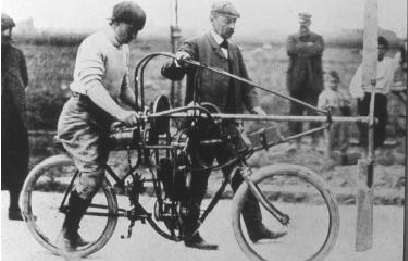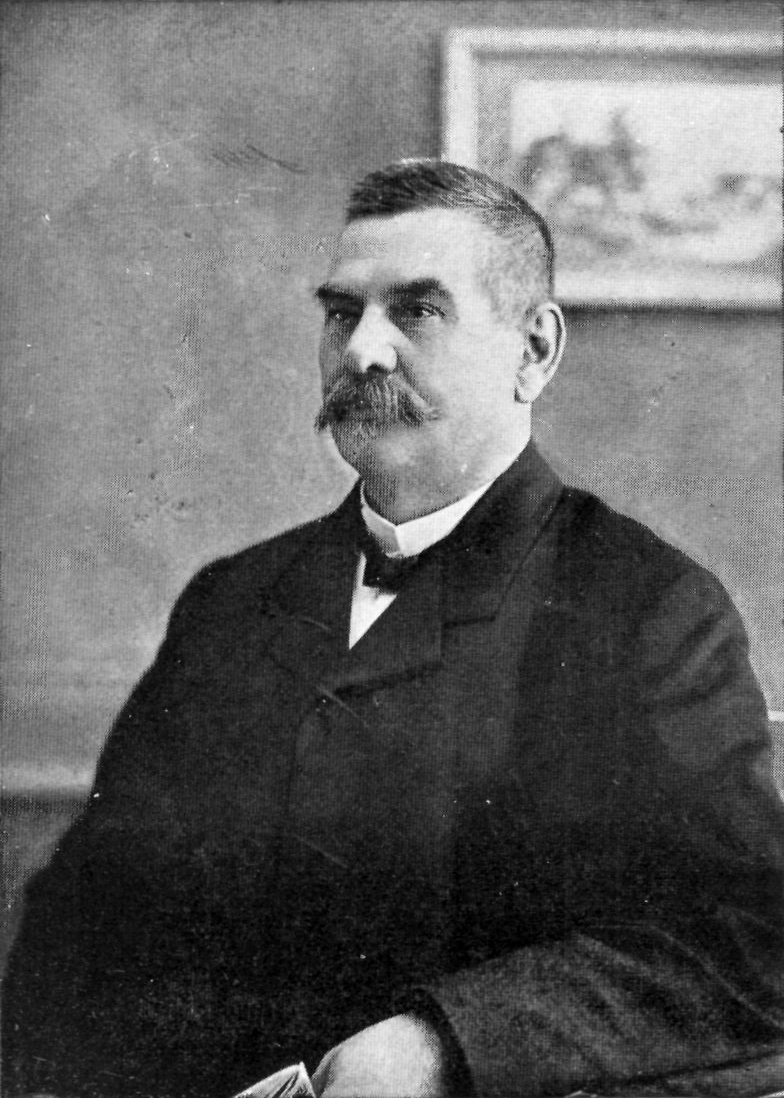|
Vuia I
The Vuia 1, also nicknamed ''Liliacul'' (the bat), was a pioneer aircraft designed and built by Romanian inventor Traian Vuia. It was finished in December 1905 in France and first flew on 18 March 1906 at Montesson. Background After finishing his studies, Traian Vuia continued to study the problem of flying, and began building his first aircraft, which he called the ''Aeroplan Automobil''. Being short of funds, Vuia left for Paris in June 1902, hoping he could find someone interested in funding his project. Once there, Vuia met Georges Besançon, the founder of the aeronautical journal ''L'Aérophile''. With his help, Vuia managed to go through the vast documentation and fundamental works regarding aeronautics. Using the knowledge from other aviation pioneers such as George Cayley, Clément Ader, Samuel Langley and Otto Lilienthal, he presented a document to the Académie des Sciences on 16 February 1903. However, his project was rejected with the response that "The problem of ... [...More Info...] [...Related Items...] OR: [Wikipedia] [Google] [Baidu] |
Victor Tatin
Victor Tatin (1843–1913) was a French engineer who created an early airplane, the ''Aéroplane'', in 1879. The craft was the first model airplane to take off using its own power after a run on the ground. The model had a span of and weighed . It had twin propellers and was powered by a compressed-air engine.Exhibit Musée de l'Air et de l'Espace It was flown tethered to a central pole on a circular track at the military facilities of Chalais-Meudon. Running under its own power it took off at a speed of 8 metres per second. Between 1890 and 1897 Tatin and Charles Richet experimented with a steam-powered model with a wingspan of and weighing with fore and aft propellers. They succeeded in flying this for a distance of at a speed of 18 metres per second. In 1902-3 he collaborated with Maurice Mallet on the construction of the dirigible ''Ville de Paris'' for Henri Deutsch de la Meurthe and in 1905 he designed the propeller used by Traian Vuia for his experimental aircraft ... [...More Info...] [...Related Items...] OR: [Wikipedia] [Google] [Baidu] |
Rudder
A rudder is a primary control surface used to steer a ship, boat, submarine, hovercraft, aircraft, or other vehicle that moves through a fluid medium (generally aircraft, air or watercraft, water). On an aircraft the rudder is used primarily to counter adverse yaw and p-factor and is not the primary control used to turn the airplane. A rudder operates by redirecting the fluid past the hull (watercraft), hull or fuselage, thus imparting a turning or yaw (rotation), yawing motion to the craft. In basic form, a rudder is a flat plane or sheet of material attached with hinges to the craft's stern, tail, or after end. Often rudders are shaped so as to minimize Drag (physics), hydrodynamic or aerodynamic drag. On simple watercraft, a tiller—essentially, a stick or pole acting as a lever arm—may be attached to the top of the rudder to allow it to be turned by a helmsman. In larger vessels, cables, pushrods, or hydraulics may be used to link rudders to steering wheels. In typical air ... [...More Info...] [...Related Items...] OR: [Wikipedia] [Google] [Baidu] |
Umbrella
An umbrella or parasol is a folding canopy supported by wooden or metal ribs that is usually mounted on a wooden, metal, or plastic pole. It is designed to protect a person against rain or sunlight. The term ''umbrella'' is traditionally used when protecting oneself from rain, with ''parasol'' used when protecting oneself from sunlight, though the terms continue to be used interchangeably. Often the difference is the material used for the canopy; some parasols are not waterproof, and some umbrellas are transparent. Umbrella canopies may be made of fabric or flexible plastic. There are also combinations of parasol and umbrella that are called ''en-tout-cas'' (French for "in any case"). Umbrellas and parasols are primarily hand-held portable devices sized for personal use. The largest hand-portable umbrellas are golf umbrellas. Umbrellas can be divided into two categories: fully collapsible umbrellas, in which the metal pole supporting the canopy retracts, making the umbrella sm ... [...More Info...] [...Related Items...] OR: [Wikipedia] [Google] [Baidu] |
Alberto Santos-Dumont
Alberto Santos-Dumont (Santos Dumont, Minas Gerais, Palmira, 20 July 1873 — Guarujá, 23 July 1932) was a Brazilian aeronaut, sportsman, inventor, and one of the few people to have contributed significantly to the early development of both lighter-than-air and heavier-than-air aircraft. The heir of a wealthy family of coffee producers, he dedicated himself to aeronautical study and experimentation in Paris, where he spent most of his adult life. He designed, built, and flew the first powered airships and won the Henri Deutsch de la Meurthe#Deutsch de la Meurthe prize, Deutsch Prize in 1901, when he flew around the Eiffel Tower in his airship Santos-Dumont number 6, No. 6, becoming one of the most famous people in the world in the early 20th century. Santos-Dumont then progressed to powered flight, powered heavier-than-air machines and on 23 October 1906 flew about 60 metres at a height of two to three metres with the fixed-wing Santos-Dumont 14-bis, 14-bis (also dubbed the '' ... [...More Info...] [...Related Items...] OR: [Wikipedia] [Google] [Baidu] |
Ernest Archdeacon
Ernest Archdeacon (23 March 1863 – 3 January 1950) was a French lawyer and aviation pioneer before the First World War. He made his first balloon flight at the age of 20. He commissioned a copy of the 1902 Wright No. 3 glider but had only limited success. He was regarded as France's foremost promoter and sponsor of aviation, offering prizes (''Coupe d'Aviation Ernest Archdeacon'' and the ''Deutsch de la Meurthe-Archdeacon prize''), commissioning designs, and organising tests and events. His most lasting contribution to aviation is the Aéro-Club de France, the oldest aero-club in the world, which he co-founded in 1898. On 29 May 1908, Archdeacon became the first aeroplane passenger in Europe when he was piloted by Henry Farman at Ghent. Early life Archdeacon was born and raised in Paris, and studied law for a career at the bar. His passionate interest in science led him to also study ballooning and aviation, and in 1884, at age 20, he made his first balloon fli ... [...More Info...] [...Related Items...] OR: [Wikipedia] [Google] [Baidu] |
Serpollet
Gardner-Serpollet was a French manufacturer of steam-powered cars in the early 20th century. Léon Serpollet is credited with inventing and perfecting the flash boiler in the late 1800s.Full Steam Ahead – Leon Serpollet The Old Motor, February 4, 2014 Retrieved July 9, 2015 Serpollet produced his own automobiles under the name Serpollet and Gardner-Serpollet until his death in 1907. Origins Léon Serpollet was born in the department of France, and went on to establish his factory with his brother Henri on the rue des Cloÿs in the |
Liquid Carbon Dioxide
Liquid carbon dioxide is the liquid state of carbon dioxide (), which cannot occur under atmospheric pressure. It can only exist at a pressure above , under (temperature of critical point) and above (temperature of triple point). Low-temperature carbon dioxide is commercially used in its solid form, commonly known as "dry ice". Solid sublimes at at Earth atmospheric pressure — that is, it transitions directly from solid to gas without an intermediate liquid stage. The uses and applications of liquid carbon dioxide include decaffeinating coffee, extracting virgin olive oil from olive paste, in fire extinguishers, and as a coolant. Properties Liquid carbon dioxide is a type of liquid which is formed from highly compressed and cooled gaseous carbon dioxide. It does not form under atmospheric conditions. It only exists when the pressure is above 5.1 atm and the temperature is under (temperature of critical point) and above (temperature of triple point). The chemical symbol ... [...More Info...] [...Related Items...] OR: [Wikipedia] [Google] [Baidu] |
Insolvency
In accounting, insolvency is the state of being unable to pay the debts, by a person or company ( debtor), at maturity; those in a state of insolvency are said to be ''insolvent''. There are two forms: cash-flow insolvency and balance-sheet insolvency. Cash-flow insolvency is when a person or company has enough assets to pay what is owed, but does not have the appropriate form of payment. For example, a person may own a large house and a valuable car, but not have enough liquid assets to pay a debt when it falls due. Cash-flow insolvency can usually be resolved by negotiation. For example, the bill collector may wait until the car is sold and the debtor agrees to pay a penalty. Balance-sheet insolvency is when a person or company does not have enough assets to pay all of their debts. The person or company might enter bankruptcy, but not necessarily. Once a loss is accepted by all parties, negotiation is often able to resolve the situation without bankruptcy. A company t ... [...More Info...] [...Related Items...] OR: [Wikipedia] [Google] [Baidu] |
Courbevoie
Courbevoie () is a commune located in the Hauts-de-Seine Department of the Île-de-France region of France. It is in the suburbs of the city of Paris, from the center of Paris. The centre of Courbevoie is situated from the city limits of Paris. La Défense, a business district hosting the tallest buildings in the metropolitan area, spreads over the southern part of Courbevoie (as well as parts of Puteaux and Nanterre). Name The name Courbevoie comes from Latin ''Curva Via'' and means "curved highway", allegedly in reference to a Roman road from Paris to Normandy that made a sharp turn to climb the hill over which Courbevoie was built. Administration Courbevoie is divided into two cantons: Canton of Courbevoie-1 and Canton of Courbevoie-2. History A wooden bridge was built crossing the Seine at Courbevoie by order of King Henry IV when in 1606 his royal coach fell into the river while being transported by ferry. Rebuilt in stone during the eighteenth century, this w ... [...More Info...] [...Related Items...] OR: [Wikipedia] [Google] [Baidu] |
Coriolan Brediceanu
Coriolan Brediceanu (1849–1909) was an Austro-Hungarian Romanian lawyer and politician. Born in Lugoj, his children included Caius and Tiberiu. Maria Lădău"Coriolan Brediceanu – activitatea juridică", in ''Revista Studențească de Studii de Istorie și Arheologie'', Universitatea de Vest Timișoara, nr.2/2004 Biography Brediceanu was born in Lugoj, the son of the soap maker Vasile Brediceanu, and the nephew of George Brediceanu,Direcția pentru Cultură, Culte și Patrimoniul Cultural Național a județului TimișMormântul lui Coriolan Brediceanu (secolul XIX), dccpcnjtimis.ro, accesat 2018-07-15 a banished boyar from Austrian Oltenia who settled in Banat. He studied at Beiuș High School and then attended the University of Budapest, where in 1874, he obtained his lawyer's diploma. After graduation, he returned to Lugoj where he lived to the end of his life. In Lugoj, he opened a law firm and soon became well known for how he defended the peasantry in trials that the ma ... [...More Info...] [...Related Items...] OR: [Wikipedia] [Google] [Baidu] |
.png)






